How can you improve your lacrosse skills. What are the most effective drills for cradling, scooping, and passing. Which exercises will enhance your dodging and shooting abilities. Discover 15 essential lacrosse drills to elevate your game
Mastering the Art of Cradling: Foundation of Lacrosse Success
Cradling is the cornerstone of lacrosse proficiency. This fundamental skill ensures ball security and control during movement. To excel in cradling, players must develop a fluid, rhythmic motion that keeps the ball nestled securely in the pocket of the stick.
Basic Cradling Technique
Proper hand placement is crucial for effective cradling. Grip the stick with your dominant hand near the butt end and your other hand midway up the shaft. Create a smooth “C” motion by bringing your bottom hand across your body while simultaneously rotating your top wrist and arm. This rocking movement forms a protective pocket for the ball.

To enhance your cradling skills:
- Practice while stationary, walking, and jogging
- Alternate between clockwise and counterclockwise rotations
- Focus on maintaining a consistent rhythm
Two-Hand Cradling for Advanced Control
Once you’ve mastered single-hand cradling, progress to two-hand cradling. This technique improves coordination and ball control, especially when navigating through tight spaces on the field. Place your hands about 6 inches apart on the stick, with your dominant hand on the bottom. Emphasize equal participation of both hands to achieve smooth side-to-side ball movement.
Dynamic Cradling Drills
To simulate game-like scenarios, incorporate direction changes and obstacles into your cradling practice. Set up cones or markers and cradle while moving in various directions – forward, backward, laterally, and with quick turns. Start at a walking pace and gradually increase speed as your comfort level improves. For an added challenge, have a teammate call out random directional commands.
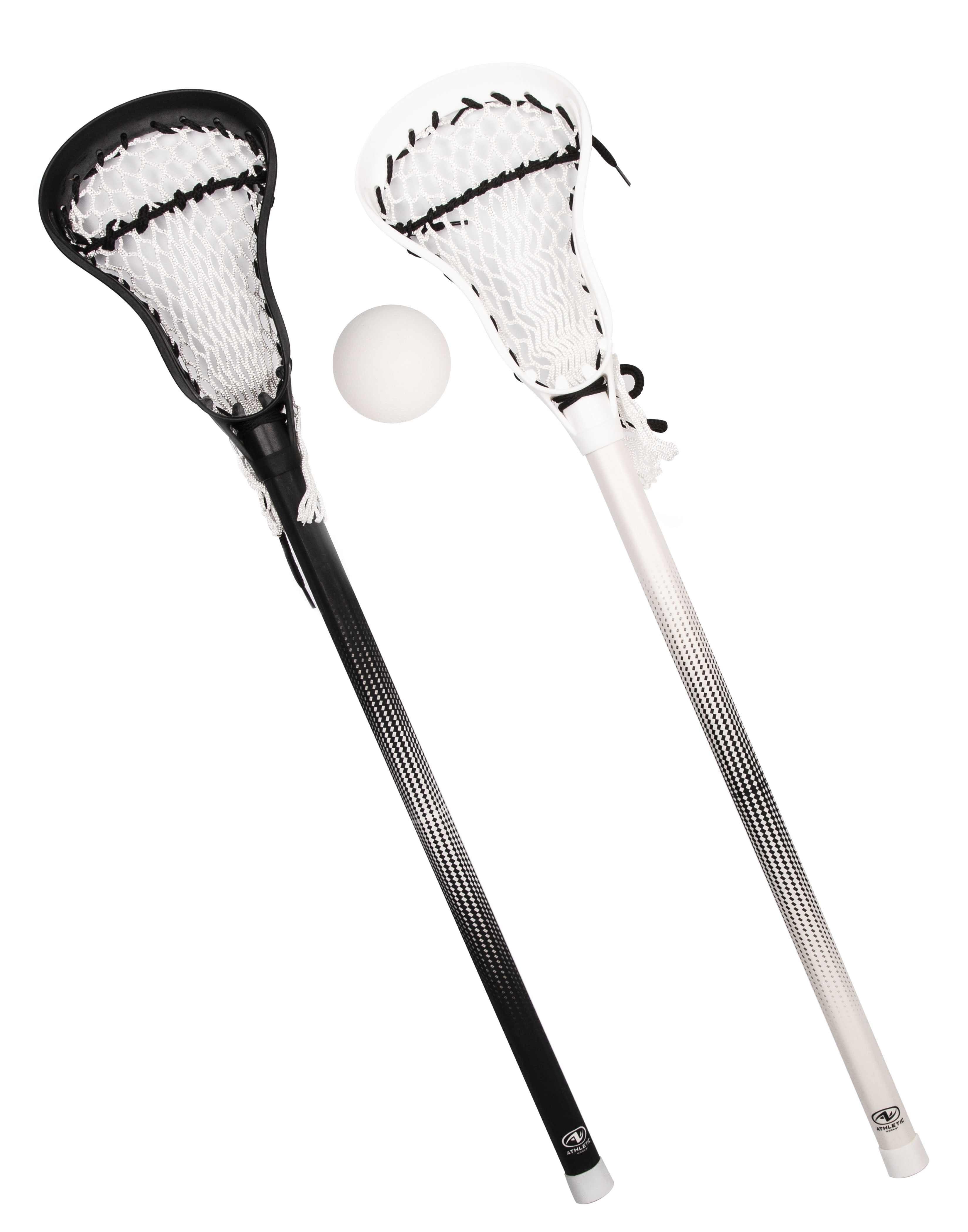
Elevating Your Stick Skills: Advanced Cradling and Ball Control
As you progress in your lacrosse journey, mastering advanced cradling techniques becomes essential for maintaining possession under pressure and creating scoring opportunities.
Toss Cradling for Enhanced Coordination
Toss cradling is an excellent drill for improving hand-eye coordination and ball control. Hold your stick vertically and drop a ball into the pocket. As it falls, give a quick upward toss to catch it back in the pocket. Focus on timing your wrist movement to match the ball’s release, aiming for a continuous vertical rhythm.
Integrating Dodges with Cradling
Combining dodging maneuvers with cradling is crucial for evading defenders and creating scoring chances. Set up obstacles to represent defenders and practice cradling while executing various dodges. Keep your stick close to your body and maintain awareness of your surroundings. As you become more proficient, introduce light defensive pressure from a teammate to simulate game conditions.
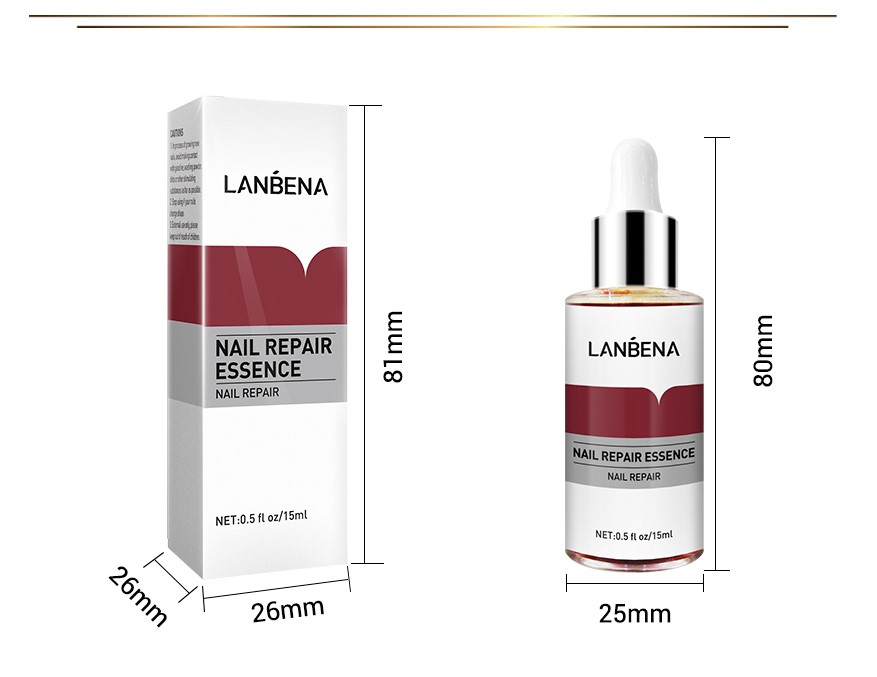
Ground Ball Mastery: The Art of Scooping
Winning ground balls can often be the difference between victory and defeat in lacrosse. Perfecting your scooping technique is essential for gaining possession and creating fast-break opportunities.
Proper Scooping Technique
To execute an effective scoop:
- Approach the ball with knees bent and a low center of gravity
- Position your shoulder over the ball
- Keep your stick head flat on the ground in front of you
- Scoop through the ball with a forward motion
- Rotate your wrists upward to secure the ball in the pocket
- Immediately transition into a cradle to maintain possession
Remember, double scooping is a common mistake that can lead to turnovers. Practice smooth, single-motion scoops to maximize your efficiency in retrieving ground balls.
Wall Ball: The Ultimate Solo Training Tool
Wall ball is a versatile and effective drill that can significantly improve your stick skills, hand-eye coordination, and overall lacrosse IQ. This exercise can be performed individually, making it an ideal option for players looking to put in extra practice time.

Wall Ball Variations
To maximize the benefits of wall ball, incorporate a variety of throwing and catching techniques:
- Overhand throws
- Sidearm passes
- One-bounce passes
- Quick-stick catches and throws
- Behind-the-back passes
Focus on maintaining a consistent rhythm while also challenging yourself with different angles and speeds. As you improve, decrease the distance between you and the wall to simulate the quick reactions required in game situations.
Dodging Techniques: Creating Space and Beating Defenders
Effective dodging is a crucial skill for offensive players looking to create scoring opportunities. By mastering various dodging techniques, you can keep defenders off-balance and generate space for shots or passes.
The Split Dodge
The split dodge is a fundamental move that can create separation from a defender. To execute a split dodge:
- Take a lateral step to widen your base
- Drop your inside shoulder and bring your stick across your body
- Quickly roll back to the inside, rotating your shoulder forward
- Drive off your inside foot to accelerate past the defender
Maintain a fluid cradling motion throughout the dodge to protect the ball and be ready for your next move.

Mastering the Face Dodge
The face dodge relies on body positioning and footwork to deceive defenders. Here’s how to perform an effective face dodge:
- Drive hard at the defender’s upper body
- Step across your body to sell an inside move
- Plant your inside foot firmly
- Explosively push off laterally in the opposite direction
- Use a sharp torso rotation to throw the defender off balance
Practice these dodges regularly to develop muscle memory and improve your ability to read defensive positioning.
Passing Proficiency: Quick Stick and Over-the-Shoulder Techniques
Accurate and timely passing is essential for maintaining possession and creating scoring opportunities in lacrosse. Mastering various passing techniques will make you a more versatile and valuable player on the field.
Quick Stick Passing
Quick stick passing allows for rapid ball movement and can catch defenders off guard. To improve your quick stick passing:
- Start in an athletic stance with hands about 18 inches apart on the stick
- Step towards your target as you prepare to pass
- Rotate your wrists and snap your top hand to generate power
- Follow through by pointing your stick at the receiver’s chest
- Receive return passes without cradling and immediately pass back
Practice quick stick passing with a partner, focusing on speed and accuracy. As you improve, increase the distance between you and your partner to challenge your skills further.

Over-the-Shoulder Passing
Over-the-shoulder passing adds an element of deception to your game and can be particularly effective in tight situations. To execute this pass:
- Cradle sideways with your dominant hand facing your target
- Bring the stick up and over your shoulder
- Release the ball by straightening your bottom arm
- Use a quick wrist snap for added velocity
Initially focus on accuracy over speed, gradually increasing the pace as you become more comfortable with the motion. Practice selling fake passes before bringing the stick back to keep defenders guessing.
Shooting Drills: Honing Your Scoring Touch
Developing a powerful and accurate shot is crucial for any offensive player looking to make an impact on the scoreboard. Incorporating various shooting drills into your practice routine will help you become a more dangerous scoring threat.
Time and Room Shooting
Time and room shooting simulates situations where you have space to wind up and release a powerful shot. To improve your time and room shooting:

- Set up cones or targets in different areas of the goal
- Practice shooting from various distances and angles
- Focus on proper footwork and body positioning
- Emphasize follow-through to maximize shot power and accuracy
Vary your release points and shot types (overhand, sidearm, underhand) to become a more versatile shooter.
On-the-Run Shooting
On-the-run shooting is essential for capitalizing on fast-break opportunities and beating goalies in game-like situations. To enhance your on-the-run shooting skills:
- Start from various positions on the field
- Sprint towards the goal while cradling
- Release your shot without breaking stride
- Practice shooting while moving at different angles to the goal
Focus on maintaining proper form and accuracy while increasing your speed and adding defensive pressure as you improve.
Defensive Drills: Shutting Down Opponents
While offensive skills often garner more attention, solid defensive play is crucial for team success in lacrosse. Incorporating defensive drills into your practice routine will help you become a more complete player and contribute to your team’s overall performance.

Footwork and Positioning
Proper footwork and positioning are the foundations of effective defense. To improve these aspects:
- Practice lateral movements and quick direction changes
- Work on maintaining a low, balanced stance
- Focus on keeping your stick in proper checking position
- Drill sliding and recovery movements to support teammates
Set up cone drills to simulate offensive player movements and practice staying in front of your opponent.
Stick Checks and Body Positioning
Developing effective checking techniques can disrupt offensive players and create turnovers. To enhance your checking skills:
- Practice poke checks, slap checks, and lift checks
- Work on timing your checks to coincide with vulnerable moments in the offensive player’s cradle
- Focus on using your body to guide opponents away from scoring areas
- Drill proper positioning when defending players behind the goal
Remember to maintain good body position and footwork while executing checks to avoid penalties and maintain defensive integrity.

Goalie-Specific Drills: Anchoring the Defense
Goalies play a critical role in lacrosse, acting as the last line of defense and often initiating offensive transitions. Specialized drills can help goalies improve their reaction times, positioning, and overall effectiveness in the cage.
Reaction and Hand-Eye Coordination
Quick reactions and excellent hand-eye coordination are essential for successful goaltending. To enhance these skills:
- Practice tracking tennis balls or lacrosse balls thrown from various angles
- Use a reaction ball to improve reflexes and hand speed
- Work on rapid stick movements to intercept shots in different quadrants of the goal
Incorporate both stationary and moving drills to simulate game-like scenarios and improve overall goalkeeping ability.
Proper Positioning and Outlet Passes
Effective goalies not only make saves but also contribute to the team’s clearing game. To improve positioning and outlet passing:
- Practice quick movements between pipes to cover different shot angles
- Work on communication with defenders to organize the defense
- Drill accurate outlet passes to midfielders and attackmen after saves
- Focus on making smart decisions when clearing the ball under pressure
Regularly incorporate these elements into your practice routine to become a well-rounded and reliable presence in the goal.

Team-Based Drills: Building Chemistry and Tactical Awareness
While individual skills are crucial, lacrosse is ultimately a team sport. Incorporating team-based drills into your practice sessions can improve on-field chemistry, tactical understanding, and overall team performance.
Fast Break Drills
Fast break situations often lead to scoring opportunities in lacrosse. To improve your team’s fast break execution:
- Practice 3-on-2 and 4-on-3 scenarios
- Focus on quick ball movement and proper spacing
- Work on communication between players in transition
- Drill both offensive and defensive aspects of fast breaks
Emphasize decision-making and unselfish play to maximize scoring chances during fast break opportunities.
Set Plays and Offensive Schemes
Developing and practicing set plays can give your team an edge in crucial game situations. To enhance your team’s offensive execution:
- Design and practice various offensive formations (e.g., 1-4-1, 2-3-1)
- Work on pick and roll plays to create mismatches
- Practice off-ball movement and cutting to create scoring opportunities
- Drill man-up and man-down situations to improve special teams play
Regular repetition of set plays and offensive schemes will improve team coordination and execution during games.

Conditioning Drills: Building Stamina and Athleticism
Lacrosse demands a high level of cardiovascular fitness and overall athleticism. Incorporating sport-specific conditioning drills into your training regimen can help you maintain peak performance throughout the game.
Endurance-Building Exercises
Developing strong cardiovascular endurance is crucial for maintaining performance during long games. To improve your stamina:
- Incorporate interval training, such as sprint-jog combinations
- Practice suicides while cradling a lacrosse ball
- Engage in full-field scrimmages with limited substitutions
- Utilize hill runs to build leg strength and endurance
Gradually increase the intensity and duration of these exercises as your fitness level improves.
Agility and Quickness Drills
Lacrosse requires quick changes of direction and explosive movements. To enhance your agility and quickness:
- Set up cone drills for lateral movement and direction changes
- Practice ladder drills to improve footwork and coordination
- Incorporate plyometric exercises like box jumps and burpees
- Use resistance bands for explosive movement training
Combine these drills with stick work to simulate game-like conditions and improve overall athleticism.

By incorporating these 15 essential drills into your practice routine, you’ll develop a well-rounded skill set that will help you excel on the lacrosse field. Remember to focus on proper technique, gradual progression, and consistent practice to see significant improvements in your game. As you master these fundamentals, you’ll be well-equipped to handle the challenges of competitive lacrosse and contribute to your team’s success.
Perfect Your Cradling Technique
Friends, are you looking to take your lacrosse game to the next level this season? Whether you’re a seasoned veteran or just picked up a stick for the first time, mastering the fundamentals is critical for success on the field. Let’s dive into 15 essential drills that will have you cradling, scooping, passing, and shooting like the pros in no time.
1. Basic Cradling
Cradling is lacrosse 101, guys. Start by holding the stick with your dominant hand on bottom near the butt end and your other hand about halfway up the shaft. Bring your bottom hand up and across your body in a “C” motion while rotating your top wrist and arm to create a rocking movement. Continuously rotating your wrists – don’t forget to switch directions! – forms a pocket that keeps the ball secure. Practice cradling while standing still, walking, and jogging to become second nature.
2. Two-Hand Cradling
Once you have single-hand cradling down, it’s time to incorporate your second hand. Grab the stick with your dominant hand on bottom and place your other hand above it, keeping about 6 inches between hands. Cradle as normal, focusing on keeping both hands working together. Don’t let your top hand go along for the ride! Equal participation builds coordination for moving the ball from side to side.
3. Cradling with Change of Direction
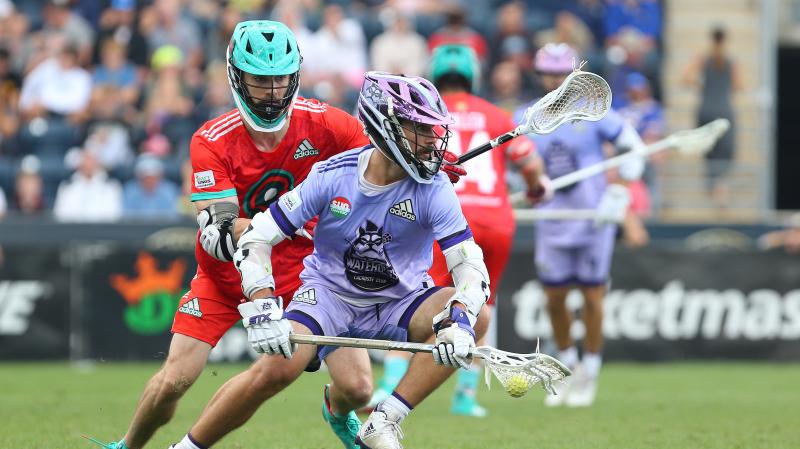
Maneuvering around defenders requires changing direction quickly while maintaining control of the ball. Set up cones or other markers and cradle while moving forward, backward, right, left, and turning around each cone. Start slow by walking and build up speed as you get comfortable. Challenge yourself by calling out commands or having a friend yell directions at random.
4. Toss Cradling
Here’s where we step it up a notch, folks. Hold your stick vertically in front of you and drop a ball into the pocket. Let it fall to the bottom and as it comes out give a quick upward toss so the ball lands back in your pocket. Time your wrist movement to match the ball’s release. Work on getting a continuous vertical rhythm going to improve hand-eye coordination.
5. Dodging and Cradling
Put your cradling skills to the test with dodging drills. Set up cones or pool noodles as “defenders” and practice evading them by cradling left, right, and between. Keep your stick close to your body and chin up. Focus on making crisp cuts while maintaining speed and control. Bonus: Recruit a friend to apply light defensive pressure or add slide drills.
6. Scooping
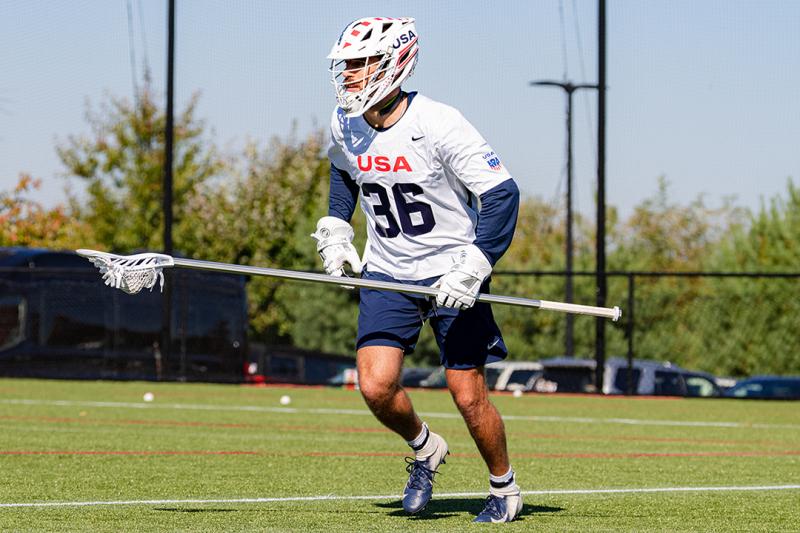
Gathering ground balls is a critical skill at every level. Get low by bending your knees and dropping your backside. Lean your shoulder over the ball, keeping your stick out front with the head flat to the ground. As you scoop forward through the ball rotate your wrists up and through to get it in your pocket. Make sure you’re cradling as soon as the ball enters your stick – no double scooping!
7. Wall Ball
Wall ball builds hand-eye coordination, reaction time, and confidence handling the rock. Simply throw the ball against a solid wall from different angles – overhand, sidearm, one bounce, bullet passes, etc. Receive the rebound by giving with the ball and cradling immediately. Work on getting into a rhythm but also mix it up to keep your body and mind engaged.
8. Split Dodge
The split dodge is a go-to move for generating space between you and a defender. Take a step sideways to expand your base, drop your inside shoulder and bring your stick to the outside across your body. Roll back inside sharply, rotating your inside shoulder forward as you drive off that foot and past the defender. Remember to keep cradling through the maneuver!
9. Face Dodge
The face dodge utilizes your feet and body position rather than stick to fake out defenders. Drive hard at their upper body, stepping across to sell your inside move, then plant your inside foot and push off laterally in the opposite direction. A violent shift of your torso pulls them off balance for a clean look at the goal.
10. Quick Stick Passing
Quick stick passing keeps the ball moving rapidly around the field. Start by cradling with your hands about 18 inches apart in an athletic stance. Step toward your target, rotate your wrists and snap your top hand to fire a crisp pass. Follow through pointing at their chest. Receive the return pass without cradling first and immediately pass it back. Go back and forth as quickly as possible.
11. Over-the-Shoulder Passing
Don’t be afraid of a little razzle-dazzle! With a partner, cradle sideways with your dominant hand facing them. Bring the stick up and over your shoulder, releasing the ball towards their stick by straightening your bottom arm. Whip your wrist for max velocity but focus on accuracy first. Over time work on selling this fake pass before bringing the stick back and throwing normally.
12. Shooting on the Run

Simulate fast breaks to improve your shot on the run. Start at midfield cradling full speed on the attack. Focus on driving hard with your back leg as you near the goal, transferring weight from your back to front foot as you plant and rotate your hips and shoulders to face the cage. Whip your stick through the shooting motion, following through toward your target.
13. Pump Fake Shooting
The pump fake is crucial for keeping goalies off balance. Approaching the crease, act as if you’re about to shoot, twisting your body and bringing the stick back. As the goalie drops, reset and step around or across to open up the net. Sell the fake but release your shot quickly before the defense can recover.
14. Backhand Shooting
Defenders overplay your strong hand, so develop a backhand shot to keep them honest. With your dominant hand halfway up the shaft, point the toe of your stick foot toward the goal. Shift your weight from your back foot as you whip the shaft forward, rotating your bottom wrist and elbow for elevation. Follow through with your hand ending up near your back hip pocket.
15. Two-Man Passing
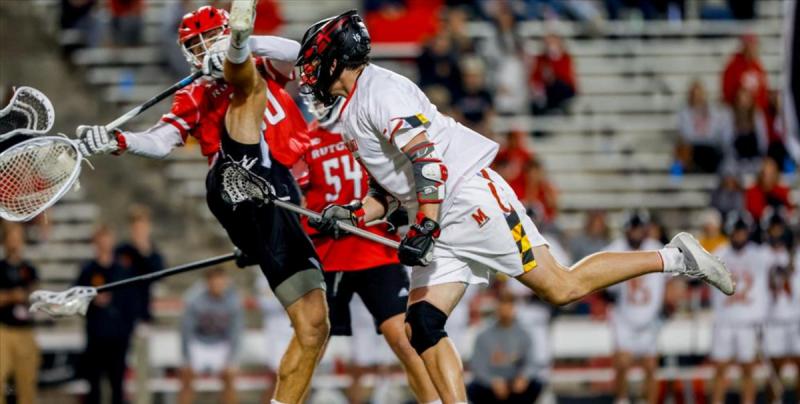
Running crisp passing patterns requires chemistry between teammates. Set up with a partner 5-10 yards apart cradling, passing, and moving the ball quickly. Communicate and designate who leads the pattern while the other mirrors. Try starting your cuts on lead passes rather than after receiving to generate speed. Goalies can stand in the middle as active defenders.
Alright guys, now you’ve got the tools to take your fundamentals to the next level. Don’t forget the importance of quality over quantity in your practice. Stick to the basics, focus on technique, and drill with a purpose. Implementing even a few of these drills a couple times a week will have you unleashing nasty cradles, feeding buttery dimes, and sniping cheddar before you know it. Now get out there and dominate the field this season!
Master Quick Stick Passing
Listen up guys, if you want to take your lacrosse game to the next level, quick stick passing is a must-have skill. By rapidly moving the ball around the field, you can keep defenses on their heels and create openings for scoring chances. Let’s break down some essential drills to have you zinging crisp passes like a pro.
1. Two-Line Passing
This drill builds quick hands and efficient mechanics. Form two parallel lines about 5 yards apart facing each other, with each player in an athletic stance. Chest passes back and forth as quickly as possible, focusing on proper form – hands spaced on the shaft, snap the wrists on release. Gradually move the lines further apart to increase velocity. You got this!
2. Rapid Fire Triangle Passing
Here’s where we add some movement, people. Set up three players at the points of a triangle about 10 yards apart. Quickly pass the ball clockwise around the triangle, then switch directions. Keep your feet moving to open up to the ball and make lead passes to your teammates. Call out the force direction to keep everyone sharp.
3. Hot Potato Passing
Up the ante by making one touch passes under pressure. Form a circle and start cranking off passes as quickly as possible. After a set time, add a defender in the middle to provide resistance and disrupt passing lanes. Focus on releasing the ball the instant it hits your stick.
4. 3 vs 2 Keep Away

This drill improves moving the ball under pressure. Start with a 3 vs 2 player advantage in a confined space. The offense maintains possession by zipping quick stick passes while two defenders try to force a turnover or send the ball out of bounds. Implement a time limit or turnover limit to increase intensity and reps.
5. Full Speed Passing
Perfect for fast break simulations at game speed. Set up two lines facing each other around midfield, one offensive and one defensive. The first O1 passes to D1 then breaks hard towards the goal. D1 outlets a lead pass timing O1’s cut. O1 must catch on the run and redirect with a quick stick pass back to the next offensive player O2 before the next defender closes.
6. Two-Man Give and Go
Master go-to passing combos by drilling with the same partner. Face each other about 10 yards apart. Pass back and forth then have one cut hard towards the opposite end. The feeder leads him with a pass into space, takes the return pass, and immediately passes back as the cutter makes his return cut upfield.
7. Crooked Line Passing
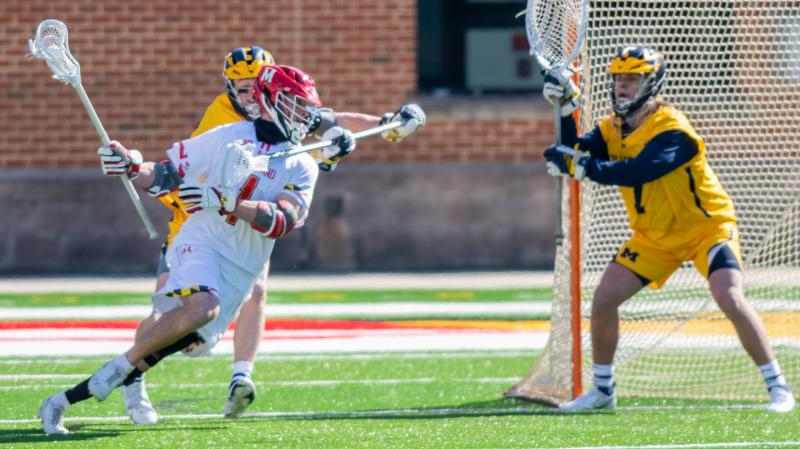
Crooked lines add angles and movement to challenge your passing. Set up in two jagged lines rather than straight lines. Focus on opening your shoulders and pointing your stick stick at your target’s chest on release. Work it quickly up and down the lines.
8. Carbon Copy Passing
Mimic mirror image passing patterns to build chemistry. Partner up and stand 5 yards apart. The leader initiates different passing combos and moves while the follower mirrors their every move. Switch roles to keep both players engaged and seeing the field.
9. Rapid Fire Assists
Quick sticks and tic-tac-toe passing helps generate goals. Set up around the crease with a shooter and two passers. The shooter starts with the ball and dumps to P1. P1 immediately passes to P2 as the shooter cuts to the ball-side pipe. P2 redirects a quick touch pass to the shooter for a one-timer on goal.
10. Keep Away Circle Passing
Now we’re switching to team concepts. Form a circle around a defender with the offense working the ball around as quickly as possible. Focus on lead passes moving the ball and on receiving with hands up ready to catch and shoot in one motion. Two passes must be made before shooting.
11. Four Corners Passing
Similar concept with four offensive players at the corners of a square about 10 yards apart. The defender starts in the middle and must pressure the ball while defenders move it rapidly around the perimeter. Good communication and anticipation are key.
12. Triangle Passing Rotation
Rotating positions develops versatility and keeps the defense guessing. Set up in an open triangle and pass quickly around the pattern. After a set time period yell “Rotate!” and each player moves one spot clockwise. Continue passing and rotating periodically.
13. Full Game Situations
Once you have the fundamentals down, implement quick passing concepts into full field scrimmages. Play live but stop frequently to reinforce key techniques. Emphasize ball movement, playing with your head up, and creativity.
14. Two-Touch Rules
Forcing a two-touch maximum exposes flaws and makes one-touch passing critical. Play short field scrimmages of 2 vs. 2 up to 5 vs. 5 with the two-touch rule in effect. Minimize double cradles and utilize your teammates.
15. Rapid Fire Shot Challenges

Test quick stick skills under pressure by running timed shooting challenges. See how many goals you can score in 30 seconds with a continuous 2 vs. 1 or 3 vs. 2 situation. One-touch passes to open players and quick catch-and-shoot are musts.
Alright guys, bringing speed and efficiency to your passing game is crucial for taking the next step. Focus on footwork, tight mechanics, and playing with vision. Drilling quick stick skills will soon have the ball flying rapid-fire around the field and lighting up goalies. Now get out there and own the field with crisp passes this season!
Practice Accurate Shooting
Listen up guys, burying the rock in the back of the net takes precise shooting mechanics. Whether ripping corners on the run or picking corners on the skip shot, accuracy is everything. Let’s go through some key drills to have you sniping cheddar at will.
1. Catch and Shoot
Dial in your form with simple catch and shoot reps. Have a partner stand about 10 yards away and feed you passes to simulate game feeds. Focus on catching the ball with hands out in front and transferring immediately into your shooting motion. Follow through directly towards the target.
2. Step Down Shooting

Step downs drill footwork and weight transfer. Start 5 yards above the crease with a ball. Take one step towards the goal with your non-dominant foot, plant your dominant foot and sink your hips as you step down. Transfer your weight from back foot to front as you release the shot. Repeat moving across the arc.
3. Shooting on the Move
Practice shooting on the run to replicate fast breaks. Start behind the net and work your way from X to X, either along the goal line or from the wings. Focus on driving off your back foot and transferring weight forward to generate power while aiming down the barrel.
4. Pump Fake Shooting
The goalie can’t stop what they can’t anticipate. Add pump fakes to your repertoire to keep them guessing. Load up as if shooting then relax your motion and reset while stepping laterally across the crease before shooting again. Sell the fake but release quickly.
5. Quick Stick Shooting
Quick sticks tighten your release and build confidence shooting under pressure. Have a partner feed you hot passes to simulate slides and recoveries. Emphasize immediate transfers from catching to shooting and target accuracy over power.
6. Corner Shooting
Aim small, miss small. Set up cones in all four corners of the net. Take five shots at each cone, focusing on sniping the cones rather than just shooting on cage. Work that outside hand by working your way around the arc.
7. Goalie Rebound Shooting
Simulate crashing the net off shots by grabbing rebounds and immediately popping in put-backs. A goalie offers up live feeds. Follow your shot, cleanly scoop any rebounds, and bury the bounce back before the goalie can reset.
8. Dodging Shooting
Incorporate your arsenal of dodge moves into your shooting to generate clean looks on the run. Face dodge, roll back, rocker step, swim move, split dodge, and more past a dummy defender into your shooting motion while driving top speed.
9. Cut Shooting
Replicate catching and shooting off cuts and picks. Set up cones as dummy defenders. Run your defender into the screen then cut hard to daylight. Receive the pass and go directly into your shooting motion in one continuous motion.
10. Defender Shooting
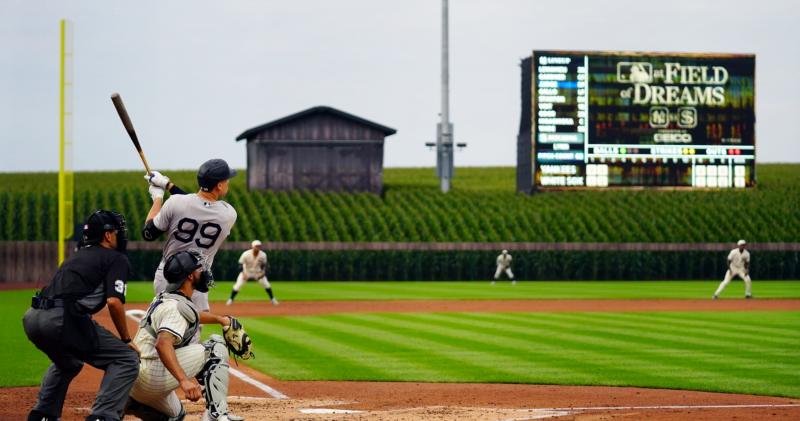
Shooting under pressure is critical for game situations. Have a defender apply light pressure by playing straight up or checking lightly. Focus on shooting through checks and maintaining form against contact.
11. Chaos Shooting
Take it up a notch by shooting under maximum pressure. Multiple defenders provide heavy pressure via poking, slashing, bodying, and physical defense. Receive chaotic feeds, create space, and get shots off accurately while taking contact.
12. Dead Tired Shooting
Develop the stamina to maintain accuracy in the clutch. Perform a series of intense sprints, squat jumps, burpees, or cycling through stations before attempting shots. Fight through fatigue to replicate end-of-game scenarios.
13. Trick Shot Shooting
Have some fun working on highlight reel shots like behind-the-backs, no-looks, between-the-legs, or over-the-shoulder shots. Creativity builds confidence and ball skills translate to game situations.
14. 2-Minute Shooting
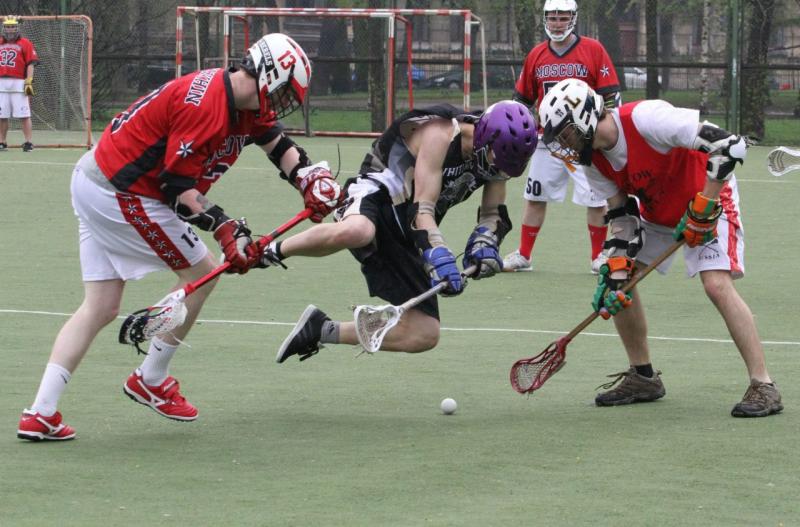
Test and track your progress with timed shooting tests. Challenge yourself to make as many shots as possible from your favorite spots in 2 minutes. Shoot quickly but focus on precision through fatigue.
15. Rapid Fire Outlet Shooting
Outlet passes lead directly to fast break chances. Set up with a goalie and defender. The goalie clears to the defender, who then outlets to you waiting at midfield. Receive the pass on the run and bury your transition look.
Nice work fellas, keep these drills in your back pocket to maintain a lethal shot all season. Consistent shooting practice is crucial – don’t just go through the motions. Focus on solid mechanics, accuracy over power, and develop confidence shooting off any pass. Now go light up the back of the net!
Improve Footwork and Dodging
Listen up guys, precise footwork and dodging skills are what separate the all-stars from the average joes in lacrosse. Whether utilizing a wicked split dodge or hitting spin moves like Lamar Jackson, elite foot speed and change of direction translates directly to success on the field. Let’s break down some essential drills to have you dancing past defenders with ease.
1. Zig Zag Running
Lateral agility is crucial for dodging defenders. Set up a zig zag pattern of cones and focus on explosively changing direction at each one while maintaining speed. Keep your knees bent, weight centered, and stick secured while turning.
2. Box Drill
The classic box drill builds coordination moving forward, backward, left, and right. Create four cones in a square pattern and face the first one. Backpedal to second cone, shuffle left to third, forward sprint to fourth, and carioca right back to start. Repeat continuously while maintaining athletic stance.
3. Crossover Dodging
Escape defenders by explosively crossing your feet. Shift your weight right and step left to sell the fake, cross your right foot over the left, then drive off that outside foot in the opposite direction. Keep your chest and eyes upfield as you make your cut.
4. Circle Dodges
Sharpen change of direction with tight circles. Set up cones as dummy defenders. Approach hard, plant your inside foot, and cut sharply back across, circling the cone and blowing by the defender’s leverage hip.
5. W Drill

The W drill combines linear and lateral motion. Sprint 5 yards then sharply cut to your left for 5 yards. Turn and sprint 10 yards, then cut hard right for 5 yards. Finally, burst back left 5 yards to complete the W pattern. Focus on explosiveness changing direction.
6. Split Dodges
Master the split dodge with cone defenders. Step hard away from your defender, dropping the inside shoulder. Roll back across your body underneath the stick while rotating your inside shoulder forward and driving off that foot to gain separation.
7. Face Dodges
Sell the face dodge using your eyes and shoulders. Drive hard at the defender’s midsection, stepping across to sell the inside move, then stick your inside foot and explode laterally back outside. Violently shift your torso and eyes to complete the fakeout.
8. Swim Dodges
The swim move is perfect on the run. Sprint hard at the defender, step wide and drive the lead shoulder at their chest. Drop the back shoulder and rip your arm over and across their body, rolling off the lead shoulder to blow by them.
9. Rocker Step

Change pace and freeze defenders with the rocker step. Speed dodge towards the defender, plant hard on your outside foot, sink your hips, and drive back laterally off the inside foot to gain a step.
10. Chin-to-Shoulder Dodging
Sell your dodge by turning your head away from the direction of your move. Look chin-to-shoulder opposite where you’re dodging to fool defenders. Whip your head around as you plant and cut back the other way.
11. Dodge Shooting
Incorporate dodges directly into your shooting motion. Face dodge, split dodge, or swim move a cone defender going 100% speed then shoot on the run at the last second. Make one fluid motion from dodge to shot.
12. Dodge Passing
Master passing off any dodge to take advantage of the opening you create. Perform each dodge at a cone defender then immediately pass to a teammate as you blow by. Work both righty and lefty.
13. Scramble Dodge Drill
Put it all together by dodging live defenders in small spaces. Fix defenders in place while you start in the center. Dodge each defender in rapid succession while they poke check and grab you.
14. Dodge Triangle Passing
Apply dodges in a game scenario by dodging upfield through multiple cones and passing to teammates. Set up as a triangle with one dodger and two catchers. Dodge up the middle, feed to a cutter, and cycle back.
15. Full Scrimmage Situations
Fully implement your dodging skills into live game reps. Coach calls out scenarios – fast breaks, man up, clear attempts. Focus on making the first man miss with an explosive dodge and go!
Alright fellas, precise footwork and filthy dodges are difference-makers that will have defenders grasping at air. Drill changes of direction and sharp cuts relentlessly until they become second nature. Master just two or three go-to dodges with either hand and you’ll be embarrassing defenders in no time. Now get out there and dominate the field with clean dodges this season!
Work on Defensive Positioning
Alright guys, we all know a lethal offense wins games, but defense wins championships! Lockdown positioning, footwork, and stick skills are essential for neutralizing opponents’ scoring threats. Let’s break down some key drills to have you dominating on D this season.
1. Mirror Drills

Sharpen your positioning by mirroring a teammate or coach. Focus on staying chest-to-chest while shuffling to cut off driving angles. React quickly to any change of speed or direction while maintaining optimal body position.
2. Lateral Slides
Quick, explosive slides are critical for shutting off cutters. Set up two offensive players about 10 yards apart with a defender guarding one. The offense moves the ball back and forth while the defender slides side-to-side quickly through each pass. Stay low and drive off your outside foot when changing direction.
3. Denial Positioning
Taking away your man’s options starts with proper denial positioning. Shade your man above GLE with your feet staggered, lead shoulder pointed at their midsection, and stick arm limiting passes. Work on angling him away from the middle by shutting off driving lanes.
4. Box Slide Drill
Practice team defensive concepts by sliding around the crease in sequence. Have four defenders at the corresponding corners of the box. Slide clockwise on coach’s command, communicating and recovering quickly to each adjacent position.
5. Adjacent Slides
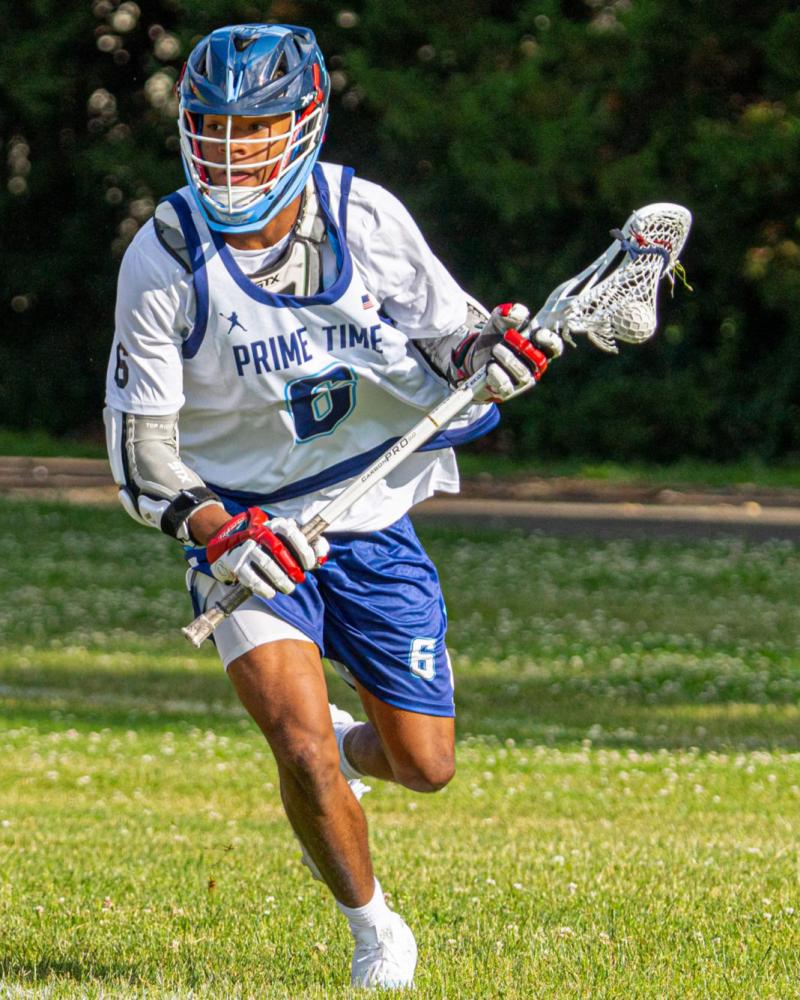
Quick one-step slides keep the offense in check. Position two offensive players five yards apart on the wing with two defenders at adjacent corners. The offense moves the ball while defenders work on quick shuffle steps to provide immediate help position.
6. Backside Rotation
Rotating weak side defenders protects against backdoor cuts and quick ball movement. Offense passes around the perimeter while defenders work to front the ball-side and rotate to bump cutters on the weak side.
7. Defending Cuts
Neutralize rub and pick cuts by maintaining inside leverage. With a partner, work on defending cuts along the crease. As he makes contact on screens, slip under and maintain body position between man and the goal.
8. Ground Ball Positioning
Win possessions with proper ground ball positioning. Roll balls out and have players work on boxing each other out while angling to scoop. Keep your knees bent, butt down, and roll off defenders working across.
9. Live Ground Balls
Increase intensity with live ground ball reps. Players line up 10 yards from a coach who rolls out balls. Fight through legal holds, slashes, and body contact to garnish possession and start the clear attempt.
10. Communicating on Slides
Talking through slides and rotations keeps everyone on the same page. Run simulated slides and overloads by calling out adjustments as you provide help. Work on loud, concise commands until they become habit.
11. Merry-Go-Round Ground Balls
Test positioning by rotating through ground ball battles. Players form a circle while coach rolls balls into the center. Go live against the man next to you, then rotate out after securing possession.
12. Goalie Clear Rides
Apply pressure on clears to force turnovers. Form a line at midfield while a player starts inside the crease with a goalie. On the whistle, the goalie clears to the player who must run the gauntlet past converging defenders.
13. Deny Adjacent Passes
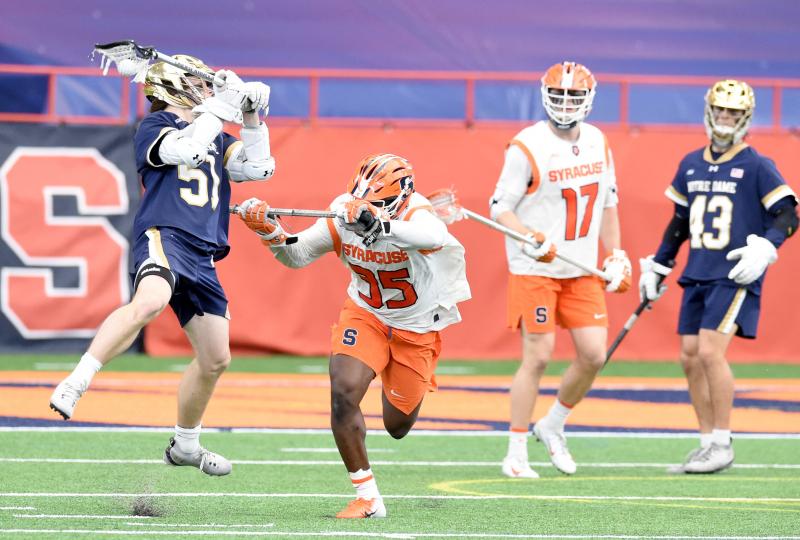
Eliminate hot passes around the perimeter. Set up four offensive players around arc with defenders in denial. Offense works on timing precise passes through tight windows while defenders work to anticipate and intercept.
14. Half Court 3 vs. 3
Put your positioning to the test in live game action. Play short field games of 3 vs. 3 focusing on denying dodges, providing help, and communicating through picks and screens.
15. 10 Second Rides
Riding forces unsettled possessions and turnovers. On clears have a player pick up the goalie with 10 second shot clock. Other defenders can provide soft double teams. Stress relentless pressure.
Nice work gentlemen, sound defensive technique takes effort but elevates the whole squad. Keep repping these drills until slides, positioning, and communication become second nature. Take pride in getting stops and you’ll be locking down the opposition in no time! Now go get those ground balls!
Increase Your Stamina and Endurance

Listen up guys, talent and skills are crucial, but high-level lacrosse demands next-level conditioning. Pushing your cardio to the max increases hustle on the field and resilience down the stretch when games are on the line. Let’s go over some killer drills to boost your stamina and endurance for dominating 60 minute performances.
1. Continuous Conditioning Circuits
Mix cardio and lacrosse drills for sport-specific training. Set up stations – sprints, agility ladders, plyos, calisthenics. Rotate through completing each exercise all-out for 45 seconds with limited rest. Repeat for 3-5 sets.
2. Gassers
Gassers build mental toughness and replicate line shifts. Mark off 25 yards and sprint at max effort up, jog back, go again. Start with 4-6 reps building up to 10-12 over time. Focus on consistent sprint speed throughout.
3. 300 Yard Shuttles
Timed 300 yard shuttles test and build your conditioning. Sprint 50 yards out, back pedal 50 yards, shuffle left 50 yards, shuffle right 50 back to the start. Shoot for under a minute and record your times to track progress.
4. Agility Ladder Drills
Foot quickness translates to all aspects of the game. Set up a ladder and continuously run through mixing up your foot patterns – two in each box, hopscotch, in and out, double leg hops. Keep up high knees driving your arms.
5. Suicide Sprints
Suicides with decreasing rest turn up the heat quickly. Sprint baseline to half court and back, walk to the opposite foul line and back, then to the opposite baseline and back. Do 5-10 sets with 45 seconds rest.
6. Plyometric Power Circuits
Plyometrics build explosive speed and power endurance. Incorporate jump squats, vertical jumps, broad jumps, and lateral bounds into your conditioning circuits. Focus on maximum effort and height each rep.
7. Explosive Change of Direction Drills
Cutting and changing direction taxes your legs. Incorporate lateral shuffles, crossovers, back pedals, and cariocas into your warm up. Emphasize dropping your hips and bursting out of each turn violently.
8. Tempo Intervals

Increase your lactate threshold and mental grit. Sprint between the 30’s at your one mile race pace with limited rest. Start with 2-3 reps and build your volume and pace over time. Fight to maintain each rep speed.
9. Weighted Vests
Wearing a weighted vest adds resistance to your runs and drills to train explosively. Start with 10-20 pounds and no more than 10% of your body weight. Remove the vest periodically to feel the speed difference.
10. Metabolic Finishers
Finish workouts strong and build your metablic engine. Grind out high rep bodyweight exercises like pushups, squats, situps, and burpees at the end of your training. Go until complete exhaustion.
11. Full Field Width Shuttles
Test your endurance and will by repeatedly crossing the width of the field, baseline to sideline and back. Give max effort each sprint. Shoot for 8-10 reps as your teammates cheer you on!
12. Tempo Runs
Build your aerobic base with long tempo runs. Run 3-5 miles at a sustainable but uncomfortable pace. Start easy, build into tempo pace halfway, then finish strong. Cool down thoroughly after.
13. Rapid Stick-Handling Ladder Drills

Improve conditioning while sharpening your skills. Rapidly work an agility ladder while cradling, dodging cones, and passing back and forth with a teammate. Mix in shots on goal at the turnaround.
14. Pull Buoy Scissor Kicks
Jump in the pool and swim laps focusing on arm isolation by keeping a pull buoy squeezed between your thighs. Engage your core and concentrate on quick, narrow kick tempo.
15. Wall Ball Continuous
Combine conditioning and shooting practice. Challenge yourself to complete 50-100 non-stop wall ball reps at game speed. Move quickly to scoop rebounds and continue shooting rhythm.
Nice hustle gentlemen, now keep pushing your limits to be the best conditioned athlete on the field. Rest when needed, but attack each conditioning session with relentless effort. Your hard work will pay off late in games when your legs are still driving hard. Now go dominate those sprints!
Develop Coordinate Hand-Eye Skills
As any lacrosse player knows, having strong hand-eye coordination is essential for success on the field. Whether cradling, scooping up ground balls, or catching and throwing accurately, lacrosse requires players to synchronize their hand movements with their eyesight. Fortunately, there are drills and exercises you can do to improve this vital skill.
Start by doing simple toss and catch drills with a partner. Face each other about 5-10 feet apart and gently toss a ball back and forth. Concentrate on watching the ball into your stick and cradle it softly to keep control. As you get more comfortable, increase the distance between you and your partner and try throwing harder passes. You can also try catching balls thrown to either side of you to work on your peripheral vision.
Another great drill is the classic “wall ball,” where you throw a ball against a wall and catch it on the rebound. Throw from different distances and work on catching cleanly with both your dominant and non-dominant hands. You can even ask a partner to periodically yell out which hand you must catch with to keep you on your toes. This improves reaction time and forces you to keep your head up.
For ground balls, place balls around you in a circle and practice scooping them up as quickly as possible. You can drop the ball from waist height to scoop it or have a partner gently roll balls to either side of you. Concentrate on watching the ball into your stick head and try to gain control in one fluid motion. Keep your knees bent and get low to the ground when scooping.
Footwork drills are also great for hand-eye coordination. Set up a ladder on the ground and weave through it while tossing a ball from hand to hand. You can also place cones in a line and weave down the line while switching which hand cradles the ball. These agility drills require concentration to look ahead while still maintaining ball control.
For catching on the run, have a partner throw balls slightly ahead of you as you jog or run lines on the field. Focus on tracking the ball while maintaining your speed and catching it without breaking stride. Start with easy tosses and then increase speed and distance. You can also try changing direction as the ball is thrown to simulate catching passes during a fast break.
Chasing fly balls also improves hand-eye coordination. Hit easy ground balls for yourself and run after them, scooping them up on the run. You can also toss balls high in the air, track them as they come down, and catch them in your stick. Adding these high fly balls challenges your vision and reactions.
To work on accuracy, set up cones or targets to aim at. Stand 10-15 yards away and practice throwing balls to hit specific cones or spots on a wall. Try this drill after running a few sprints to simulate throwing accurately when tired. For added challenge, call out which hand to release with before each throw.
When catching passes on the run during drills or scrimmages, keep your eyes on the ball from the passer’s stick all the way into your own stick head. Don’t take your eye off the ball! This tracking helps develop hand-eye coordination for catching passes in game situations. Tell teammates to lead you properly so you can run through passes without breaking stride.
Reaction ball drills are also great for honing coordination. Use a reaction ball that bounces unpredictably to play catch with a partner. The erratic bounces challenge you to adjust your hands, fingers, and body position to catch the ball cleanly. You can also bounce the ball against a wall by yourself and catch the extreme bounces.
To improve your cradle, tie a ball into the top of your stick head so it hangs freely. Now go for a jog or do agility drills while concentrating on giving the ball smooth, controlled movement with your wrists and fingers. Keep your hands soft and flexible during the cradle.
Finally, nothing develops hand-eye coordination for lacrosse better than plain old wall ball. Spend time each practice playing wall ball games with teammates. See how many quick “outs” you can make by throwing the ball off the wall above waist level and catching your partner’s rebound before it bounces twice. Hand-eye coordination will rapidly improve!
Mastering these lacrosse drills and exercises will help you develop the critical hand-eye coordination required for the sport. With improved ability to track and catch balls cleanly, cradle smoothly, and release passes accurately, your game will rise to the next level. So grab a partner, find a wall, and get to work on these essential skills!
Learn Proper Checking Techniques
Delivering legal, controlled checks is a fundamental skill for lacrosse players. Checking dislodges the ball from an opponent’s stick and creates turnovers. Mastering proper technique keeps checking safe, effective, and within the rules.
Always remember that lacrosse checks must only contact an opponent’s stick or gloved hand holding the stick. Any check landing on an unpadded body part or helmet is dangerous and illegal. Focus on disrupting stick control, not injuring players.
The basics of checking involve utilizing your own stick’s length and momentum to knock the ball free. Approaching from the side allows maximum legal contact on your opponent’s stick. Swing through the check following through to generate power.
Keep your checks controlled by avoiding wild, uncontrolled swings of your stick. Flailing stick checks are likely to incur penalties. Aim for stick or hand contact using only moderate force. Let the check’s technique, not violence, dislodge the ball.
The poke check is a quick jab done by briefly sliding your stick head over the top of your opponent’s stick head to jar the ball free. Poke checks utilize speed and accuracy rather than power. Time the check to connect as the opponent cradles or prepares a pass.
The slap check is a more forceful swing done by slapping the side of your stick directly onto your opponent’s stick or gloved hand. Slap checks work well when running alongside another player. Again, controlled force is key, not recklessness.
To body check legally, plant your shoulder into the opponent’s chest or shoulder area after checking their stick. Never make initial contact with the body! Crouch low, relax your body on impact, and avoid helmet collisions.
Lift checks try to leverage your stick under the opponent’s stick head to lift it up and jar the ball free. Lifting through the bottom of the opponent’s head takes advantage of their stick’s natural flex.
The wrap check reaches over and around the opponent’s stick head to temporarily “trap” it, preventing them from freely moving their stick. Wrap only long enough to disrupt stick handling, then disengage.
Remember that only certain players may legally body check based on age and level of play. Youth and high school girls cannot body check opponents. Familiarize yourself with governing league rules to avoid penalties.
Work on your checking technique during drills with teammates. Have a partner run slowly while cradling a ball and practice executing controlled poke, slap, and lift checks to dislodge it. Trade roles to experience both perspectives.
Another useful drill is to have a teammate cradle a ball while walking around cones. Follow them closely while executing legal poke and slap checks when they round each cone. Communicate to avoid excessive contact.
For body checking practice, have a partner run directly at you while cradling a ball. Plant your shoulder into their chest, make controlled stick contact, and drive through with your legs to direct them backwards. Repeat in both directions.
During games, look for opportunities to check when opponents have their head down while cradling or are preparing to pass. Time check execution just as the ball enters the opponent’s stick head for maximum effectiveness.
Don’t reach across a player’s body or check from behind. Only check from the front or side when defenders are clearly visible to the ball carrier. This avoids dangerous blind-side collisions.
Develop active footwork to maneuver yourself into good checking position. Shuffle sideways, pivot, and drop step to angle your body to make legal stick contact. Stay balanced for a controlled delivery with full body momentum.
Condition yourself physically for checking. Develop strength in your arms, shoulders, and hands for controlling your stick through checks. Maintain low body fat to maximize speed, agility, and power.
Watch lacrosse footage to study proper checking mechanics. Observe how experienced players utilize precise timing, controlled contact, and proper body positioning. Visualize proper technique.
With a teammate, stand 2 yards apart and toss a ball back and forth while applying controlled poke and lift checks simultaneously as the ball arrives. This develops quick hands and reflexes.
Incorporate stick checking drills into warm-ups before practice. Quick hand and eye focus builds reflexes and confidence for checking during game situations. Solo drills also build hand speed and coordination.
Checking competitively in practice prepares you for game intensity. Remain controlled and communicate limits, but strive and challenge each other to execute techniques properly at game speed.
Mastering legal stick checks, positioning your body effectively, and controlling check force takes time and repetition. But dedicated practice of proper techniques will make checking second nature and lead to more turnovers and possessions for your team.
Focus on Communication with Teammates
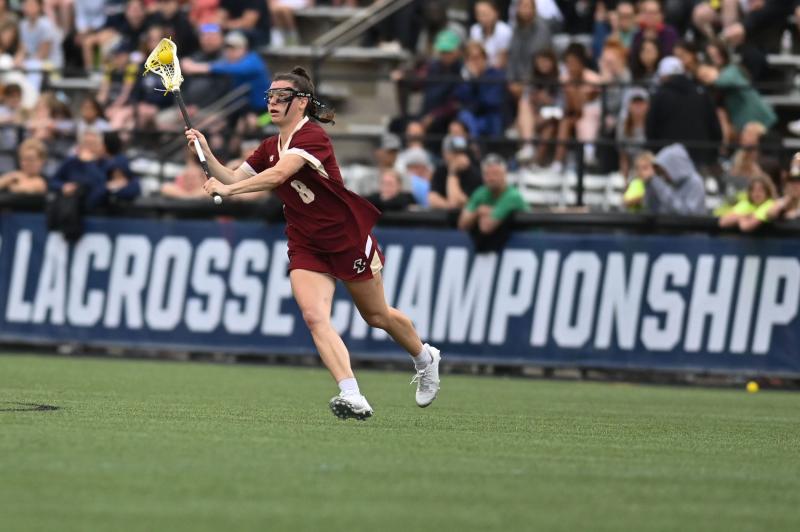
Effective communication between lacrosse players is vital for success. Teams that talk constantly on the field execute plays smoothly, switch matchups effectively, and react decisively together. Here are tips for improving communication with your teammates during practices and games.
First, get to know teammates personally off the field so you feel comfortable communicating during high-pressure game situations. Talk about your lacrosse backgrounds, skills, pet peeves, and personalities so you understand how to best interact with each player.
On the field, establish go-to shorthand terms and code words for common scenarios to streamline verbal exchanges. For example, set words for picks, slides, cuts, mismatches to exploit, etc. Simple, direct language keeps communication concise under pressure.
Designate defensive leaders to call out matchups such as “I’ve got #19!” This prevents confusion and missed assignments when picking up loose players or switching marks. Echo key matchup changes loudly to ensure all teammates hear.
Announce picks when setting screens for dodging teammates. Loudly yell “Pick right!” or “Pick left!” so teammates avoid contact. Confirm the picker is ready before dodging into contact.
When rotating defensively, proactively verbalize switches by naming the incoming teammate prior to the substitution. “John, you have ball” smoothes transitions and prevents lapses.
As an offensive initiator, make eye contact with the player you are passing to and call their name before delivering the ball. This captures their attention and readies them for the imminent pass.
When instructing less experienced players, briefly explain your commands clearly and positively. Say “John, slide early on the dodge” rather than just barking “Slide!” Context helps them learn.
Ask questions of teammates during play to increase engagement. “Can you handle him 1-on-1?” or “Want me to push up on D?” gets them thinking proactively.
Establish go-to words or phrases to break opponent rhythms. Odd utterances like “Peanut butter!” randomly yelled can disrupt their focus and communication.
Design and number set plays with accompanying key words to efficiently run them during games. No need to huddle, just yell “32 Blue!” when ready to execute a planned play.
When calling for the ball on offense say “Ball!” loudly while actively working to get open. Don’t just stand waiting. Voice urgency to demand the pass.
Use positive reinforcement when teammates execute correctly. Affirm good slides, picks, clears, etc. with a simple “Good work!” to build team morale.
Critique constructively when errors happen. Say “Let’s tighten up the clears” rather than singling out an individual negatively. Team-first language prevents finger pointing.
On the bench, proactively discuss upcoming scenarios to handle as a unit. Decide how to attack a tough defender, for example. Having a plan facilitates execution.
During stoppages, talk through recent game situations to figure out as a team how to improve. Quickly analyze what’s working and what adjustments are needed.
Design hand signals with specific meanings to communicate silently from a distance. Useful for signaling play calls, hidden ball tricks, fast breaks, etc.
Use constructive feedbackloops and ask for advice. “How can I get open against their slide D?” invites input to benefit all.
Vocalize important game details to keep the team informed. Communicate time remaining, opponent fatigue, unfavorable matchups, etc.
Finally, stay positive when talking to teammates, especially after mistakes. Keeping spirits up and supporting each other breeds cohesion and resilience.
By constantly communicating supportively, efficiently, and clearly, you strengthen team chemistry on and off the field. Lacrosse requires well-oiled coordination between teammates, so make habitually talking and listening to each other a priority.
Study Offensive and Defensive Strategies

Implementing sound offensive and defensive lacrosse strategies is key to outsmarting opponents on the field. Analyzing other teams’ systems, learning strategic fundamentals, and drilling key tactics will give your team an edge.
On offense, study zone and matchup strategies against different defensive sets like man-to-man, zones, and hybrids. Identify how to exploit gaps, overloads, and mismatches against each.
Against man defense, teach dodging angles to beat defenders one-on-one. Effective picks and two-man games also create momentary openings against man coverage.
For efficient half-field sets, implement a 2-3-1 formation with two attackmen, three midfielders, and a crease attackman. This balances dodging, feeding, and cutting options.
Against zone defenses, emphasize quick ball movement, skipping passes across zones, and picks near zone boundaries to manipulate shape. Fast passing defeats zones.
For man-up offensive sets, adopt a 1-3-2 umbrella formation with one crease attackman, two high attackmen, two midfielders, and one defender up top. This stretches the defense thin.
On clears from defense to offense, teach midfielders to streak deep and attackmen to swing wide to space the field. The goalie initiates fast breaks off clears when possible.
Against ride defenses, clears should slash across the field laterally then upfield quickly. Avoid pickups along the sidelines when clearing under ride pressure.
Defensively, learn proper positioning for zone defenses like the 2-3, 2-2-1, and 1-2-2 sets. Vary zone looks to confuse offenses.
When pressing out on defense, apply high pressure a few steps inside the midfield line to limit offensive space and passing angles.
Against extra-man offenses, implement a triangle-and-two zone with three players across the top area and two attack defenders down low. This clogs shooting lanes.
Teach defenders how to direct dodgers away from the crease and into support defenders when isolated. Don’t allow straight-line drives.
On rides, attack the ball carrier immediately on turnovers for a 6-on-4 advantage. Disrupt clears early before offenses can organize.
When clearing against rides, teach short outlet passes then straight upfield advances. Avoid carrying the ball directly into pressure.
Scout upcoming opponents and analyze their offensive and defensive tendencies. Look for weaknesses and patterns to exploit.
Drill key tactics like slides, two-man games, clearing, and riding repeatedly in practice so they become second nature during games.
Study man-down defensive principles like adjacent sliding, lane coverage, and playing smart, contained defense when outnumbered.
Master transition play by quickly advancing the ball off turnovers before defenses reset. Look deep immediately to fast break.
Implement set plays off out-of-bounds and dead ball situations. Script opening moves to create instant mismatches.
Teach creative unsettled techniques like fake flip fast breaks, hidden ball tricks, and quick-stick shots before defenses set.
Vary offensive sets, dodging moves, two-man games, and off-ball cuts to keep defenses guessing. Never be predictable.
On faceoffs, analyze opponents’ strengths and weaknesses and counter with appropriate clamp techniques and faceoff plays.
Review post-game footage as a team to analyze strategic improvements. Break down what worked, what failed, and how to adjust.
Stay simple early in the season with basics like man offense and defense. Add strategic wrinkles gradually as execution improves.
Focus on improving basic lacrosse skills and fitness first. Strategy means little without the ability to execute fundamentals well.
Mastering both offensive and defensive strategies takes time and consistent practice. But creative, intelligent play calling will help outmaneuver opponents and lead to more wins.
Train Hard to Build Overall Strength
Superior strength and conditioning gives lacrosse players a tremendous on-field edge. Well-rounded training builds endurance, power, speed, and mental toughness for outstanding performance. Follow these tips to train hard and dominate.
Always warm up thoroughly before intense training to elevate heart rate, increase blood flow to muscles, and mobilize joints. This prevents injuries and optimizes workout quality.
Perform multidirectional sprints that mirror lacrosse movements. Pound the turf driving forward, backpedaling, side shuffling, and carioca stepping to build lacrosse-specific stamina.
Include lateral and change of direction drills in workouts. Quickly stop, pivot, cut sideways, and accelerate to improve agility critical for dodging, clearing, and covering.
Execute single-leg jumps, hops, and bounds between cones during warm ups. This strengthens stabilizer muscles in the hips and ankles vital for cutting and change of direction.
Set up obstacle courses requiring crawling, climbing, jumping, and vaulting. This full-body functional training builds coordination, power, and mental grit.
Sprint uphill using maximum effort for improved leg drive and explosive starts. Find a moderate incline and burst up repeatedly. Uphill running strengthens muscle fiber.
Incorporate lateral resistance band walks into warm ups. Pressing forcefully sideways against the band engages glutes and hips for explosive first steps.
Perform single-arm dumbbell snatches to improve unilateral arm and shoulder strength for stick checking, controlled cradling, and shooting power.
Execute cross-body lunge twists with a medicine ball to build rotary core strength for torque in passes, shots, and checks. Improve hip mobility.
Do explosive pushups clapping your hands between reps. This trains fast-twitch muscles and improves upper body pushing power.
Include heavy rope slams and battle ropes into routines. Violently and rapidly whipping ropes builds incredible shoulder and arm endurance.
Train pulling power with shrugs, farmer’s walks, and lateral raises using resistance bands. Strong pulling muscles improve cradle control and stick skills.
Perform sprint intervals on a treadmill or track focusing on proper form and maximum effort. Repeat hard 15-60 second bursts with rest periods.
Run distance at a brisk but controlled pace to build aerobic endurance. Your lungs and heart must perform for four quarters.
Incorporate burpees into workouts to simultaneously build power, endurance, and mental stamina. Regularly push your limits with burpees.
Split squat jumps boost single leg strength, balance, and vertical leaping ability critical for faceoffs, ground balls, and checking.
Do low, heavy trap bar deadlifts for full posterior chain and grip strength. Proper deadlifting technique prevents back injuries and builds core stability.
Train core strength with planks, flutter kicks, leg raises, and Russian twists using medicine balls. Stability boosts force generation in the hips and shoulders.
Between workout days, perform active recovery with light jogging, biking, swimming, or yoga to speed muscle repair, improve flexibility, and prevent soreness.
Watch game film to observe elite player speed, change of direction, and effort. This mental imagery primes your central nervous system to move at high levels.
Eat quality, nutrient-rich foods and hydrate thoroughly to provide muscles the resources they need to grow and thrive under heavy training loads.
Hard physical preparation combined with proper nutrition and recovery will enable peak lacrosse performance. Outwork and outlast opponents this season!
Increase Your Speed and Agility

Speed and agility are perhaps the most important physical attributes in lacrosse. The game is fiercely fast-paced, placing a premium on acceleration, change of direction, and reacting quickly. Boost these athletic markers with targeted training.
Perform form sprints, focusing on perfect technique over maximum velocity. Drive hard with your knees and arms, maintaining a slight forward lean. Ingrain ideal running form.
Execute starts from a stationary three-point stance to maximize first-step explosion from a stopped position. This mimics faceoffs and reaction scenarios.
Include resisted sprints by dragging a parachute or band behind you. The extra resistance compounds muscle recruitment and power development when removed.
Time yourself over set distances and aim to lower your times through consistent sprint work. Using a stopwatch provides quantifiable speed benchmarks.
Perform flying sprints by allowing yourself a running start into maximum velocity sprints. This builds top-end speed needed on fast breaks.
Set up agility ladders and cones on the field and regularly drill prescribed footwork patterns. Quick feet translate to the field.
Focus on body lean, arm drive, and hip flexibility when performing crossover, carioca, and backpedaling drills. Opening the hips enables fluid change of direction.
Explosively change direction during cone drills by sinking your hips laterally before driving off the outside foot. Don’t rise up when cutting.
Perform lateral shuffle and carioca drills using resistance bands around your ankles. The added tension forces powerful hip engagement.
Include sprint and backpedal drag steps where you violently pull your front foot back before driving out of cuts. This translates to field play.
Execute single-leg bounds, hops, and mini hurdle jumps to build ankle stability, balance, and unilateral power for direction changes.
Develop a strong, flexible core with planks, rotations, and anti-rotational exercises. Core strength maintains form when fatigued.
Time straight line suicide runs where you sprint, backpedal, and side shuffle continuously. Work on smoothly transitioning between running modes.
Perform ladder drills with a teammate. Take turns following each other while reacting to their every cut and turn. This sharpens reflexes.
Include hip mobility stretches and exercises in warm ups. Flexible hips allow you to open up and drive out of cuts without wasting motion.
Hydrate and fuel properly around workouts. Speed training causes sweating and burns calories. Replenish what you lose.
Focus on quality workouts over quantity. Speed training requires full recovery between sessions to adapt and improve.
Review video of elite players exhibiting blazing game speed. Visualize and replicate their running and cutting efficiency.
Mastering acceleration, change of direction, and reacting swiftly will make you a matchup nightmare. Apply speed and agility work consistently to dominate the field.
Stretch and Warm-up Before Games and Practices
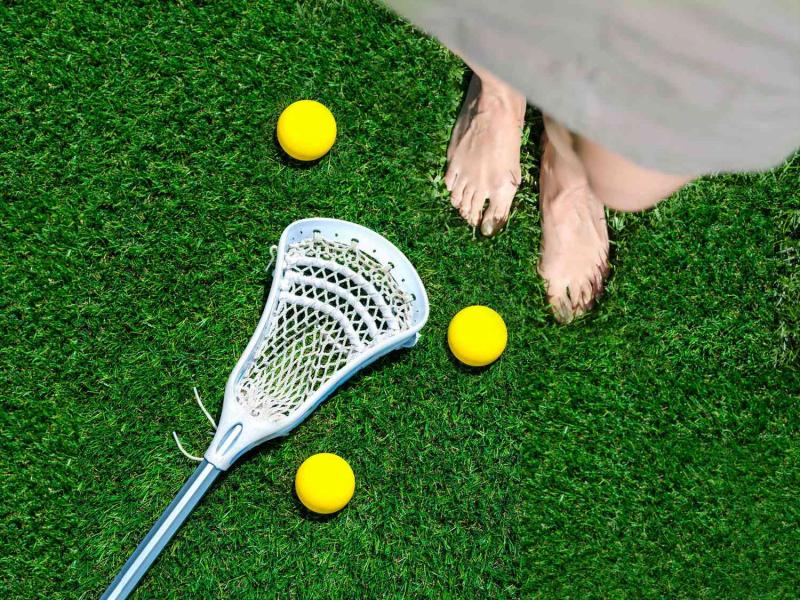
Properly warming up and stretching before lacrosse activities is vital for injury prevention and optimal performance. Gradually increasing heart rate, breaking a sweat, and improving flexibility through dynamic movements enhances readiness.
Always warm up for 10-15 minutes before intense lacrosse play. Take an easy lap around the field then begin dynamic stretches for major muscle groups.
Perform leg swings, squats, and lunges to open up hips and activate glutes and quads. Flexible legs allow for better dodging and checking.
Execute arm circle windmills forward and backward to mobilize shoulders. Use controlled, large circles to loosen up joints.
Incorporate crossover high skips, butt kicks, and cariocas to elevate heart rate and warm up hips, glutes and lateral muscles.
Do walking knee hugs and quad pulls to improve range of motion for sprinting. Lift knees high and walk pushing them rearward.
Perform lateral lunges and shuffles to prep for fast change of direction. Drop step and explode out of cuts.
Activate your core muscles with twisting windmills and trunk rotations. Warm core muscles boosts power and protects from injury.
Include push-ups and planks to get blood flowing through chest, arms, shoulders and core before activity.
Execute dynamic hamstring stretch kicks, consciously contracting the glutes and core while kicking. Actively flexing warms up muscles.
Perform shoulder mobilizations by making controlled circles forward and backwards with the arms. Open up the shoulder joints.
Hydrate well before warm ups and gameplay to optimize performance and delay fatigue. Drink 16 oz of water beforehand.
Do lateral shuffles and backpedals to activate hips, glutes and stabilizer muscles vital for changing direction.
Follow every dynamic warm up with a brief static stretch holding the major muscle groups for 15-30 seconds. This improves flexibility.
Include wrist and forearm stretches and rotations to loosen up before cradling and stick handling. Loose wrists and hands control better.
Warm your ankles thoroughly with alphabet ankle walks and rolls. Stable ankles prevent sprains when cutting.
Perform neck rotations and stretches to improve mobility and safely strengthen this vulnerable area. Prevent whiplash injuries.
Break a light sweat halfway through warm ups by ramping up movement intensity. Increased body temperature boosts muscle function.
Conclude warm ups with a team huddle cheer to spike energy and adrenaline before taking the field. Get mentally focused.
Cool down after games by jogging and doing light stretching. This removes lactic acid, prevents stiffness, and aids muscle repair.
Proper dynamic warm ups enhance lacrosse performance and reduce injury risk. Make them a consistent part of your pre-game and practice routine.
Watch Lacrosse Videos to Analyze the Pros
Studying video of professional and top-level lacrosse players is an invaluable way to improve your own skills and knowledge. Their technical execution, positioning, and on-field habits provide a blueprint for elevating your play.
Focus on a single player each video and dissect their every movement with and without the ball. Note their effort level, field awareness, and coordination.
Observe elite offensive players and break down their dodging angles, shooting mechanics, two-man games, and off-ball movement. Model their techniques.
Analyze defenders’ positioning, footwork, body angle, stick checks, and slides. Emulate their shutdown habits like forcing non-dominant hands.
Study how the best faceoff specialists gain leverage, counter moves, control the clamp, and win draws. Apply their nuanced techniques.
Watch goalies’ positioning on shots, clearing outlet passes, rebound control, and communication with defenders. Replicate their savvy.
Rewind video repeatedly to master nuances like stick moves, body feints, and coordination that may unfold quickly. Review in slow motion.
Note elite players conditioning, athleticism, change of direction, and effort when fatigued. Their fitness provides goals for your own training.
Observe midfielders transitioning from offense to defense. Their recovery speed, urgency, and communication offer lessons during hectic transitions.
Pay attention to all off-ball movement by cutters, screeners, and defenders. Even away from the ball, top players work relentlessly.
Watch pre-game warmups to see training techniques and flexibility routines. Mimic their preparation for optimal performance.
Diagram common offensive sets and strategies used by the most skilled teams. Implement what works at your level.
Note players with similar builds or handedness to your own. Their styles and tactics may match your abilities.
Follow lacrosse media channels on YouTube and social media for drills, tutorials, analysis, and motivation from the sport’s elite.
Study your next opponent online looking for strengths, weaknesses, and tendencies. Tailor your game plan accordingly.
Compare your own filmed games side-by-side with professional film to identify technique differences. This illuminates areas for personal improvement.
Cut together a personalized highlight reel of goals, assists, saves, or checks to study repeatedly. Instill the mindset and confidence top players display.
Analyze game situations and ask yourself what the best players would do given the circumstances. Think and execute like them.
Watch both incomplete and successful plays. Failure often teaches more than success. Dissect the differences.
Share video examples with teammates and collectively analyze. Debate strategy and individual techniques as a group.
Apply lessons learned from video immediately in your next practice. Test new footwork, shooting, or passing elements and refine them through repetition.
Studying lacrosse video builds skills exponentially faster than just practicing alone. Strive to emulate the elite and accelerate your development.
Continuously Refine Your Skills Through Drills

Repeating drills to refine lacrosse skills builds muscle memory and instinctive play. As the age-old saying goes, “Perfect practice makes perfect.” Follow a progressive system of skill mastery through drills.
Begin each practice with fundamental stick skill drills like cradling, scooping, catching, and passing to reinforce basics before moving on to more advanced drills.
Start drill repetitions slowly, focusing on perfect technique. Gradually increase speed while maintaining proper form for skill mastery.
Use floor ladders, dots, cones, and obstacles during drills to ingrain footwork. Navigate spaces as you would on the field.
Have players perform solo drills first to nail down technique, then add passive defenders to up the pressure and realism as skills improve.
Increase difficulty incrementally by tweaking drills to present new challenges. Raise targets for passing, shorten time windows, add defenders, etc.
Utilize drills that mimic common game scenarios like curling off picks, splitting double teams, and two-man games. Replicate game play.
Perform drills to exhaustion to build mental stamina. Play through fatigue in practice to prepare for battles late in games.
Time skill challenges during drills to create intensity and competition. See who can complete tasks most accurately in allotted times.
Focus each practice block on a specific skillset like shooting, clearing, reacting defensively, etc. Funnel drills toward a defined goal.
Teach fundamentals first during drills, then install new strategic wrinkles like unsettled situational fast breaks, bites, and slides.
Demand players call out ball movement, picks, cuts, and slides during drills. Communication and reaction become natural.
Moderate rest intervals between repetitions to maintain intensity. Don’t allow lackadaisical pacing during repetitive drills.
Rotate partners and groups during drills to build chemistry with all teammates. Familiarity breeds better on-field connectivity.
Review video of each player executing drills to provide individual feedback. Frame improvements positively to encourage growth.
Build drills that exaggerate lateral motion, change of direction, and acceleration. Develop critical physical tools.
Conduct drills on game fields whenever possible. Measure distances and become accustomed to real-world spacing.
Play out situational game sequences live during drills. The game pressure sticks with players more than stationary drills.
Maintain a spiral notebook cataloging drills, successes, areas needing improvement, and player progress. Track development over time.
Constantly seeking mastery through repetitive, focused drills separates good from great players. Outwork opponents by sweating the details daily.